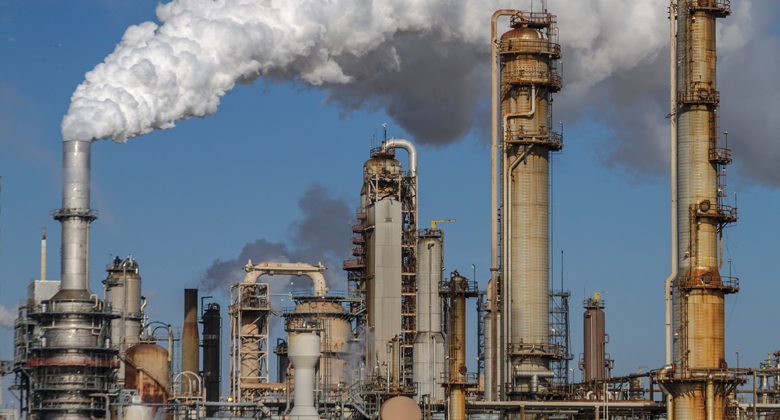

The state energy firm aims to boost production and meet Kuwaits ambitious strategic targets
As the organisation responsible for all of Kuwaits onshore oil and gas exploration and production, Kuwait Oil Company (KOC) and its activities are crucial to the development of the country. Its most challenging target is to boost production to 3.65 million barrels a day (b/d) by 2020 and maintain this until 2030. Current production levels are about 2.9 million b/d.
Long history
First established in 1934, the organisation was formed by the UKs Anglo-Persian Oil Company (now BP) and the US Gulf Oil Corporation (now Chevron), and by 1938 oil had been discovered in the Burgan field. In 1946, the country started exporting and the next two decades witnessed major expansion in its fields and facilities. In 1975, the Kuwait government took over the company and KOC became fully owned by the state.
KOCs most challenging target is to boost oil production to 3.65 million barrels a day by 2020
A restructure of the sector in 1980 to bring together the various state-owned energy entities saw KOC become a subsidiary of the Kuwait Petroleum Corporation. KOC today has more than 9,000 employees and is led by chief executive Hashem Sayed Hashem, who was appointed after a reshuffle of oil industry executives in May 2013.
The most recent scheme to be tendered is the $1.17bn package of contracts to increase production in the Jurassic basin, which could add 120,000 barrels of oil equivalent a day to output. In July, MEED reported that the projects had been revived in order to make up for lost production from the Divided Zone. Long-running disputes between Kuwait and Saudi Arabia, with whom it shares the territory, resulted in production from the area falling to zero from 500,000 b/d earlier this year.
Jurassic projects
This was a big incentive for KOC to restart the Jurassic projects, which stalled amid financing issues in 2012 after being awarded to the local Kharafi National in 2010. This time around the scheme will be split into three major contracts: West Raudhatain, East Raudhatain and Sabriyah with Umm Niqa. So far, 16 firms have been prequalified. An award had been expected by the end of 2015, but the deadline for prequalification was recently extended to the end of October.
Further contracts in the Jurassic basin, worth $1.5bn, are expected to be launched in the first half of 2016.
| Key Kuwait Oil Company projects | ||||
|---|---|---|---|---|
| Project | Budget ($m) | Status | Award year | Due |
| Ratqa Lower Fars heavy oil: production facilities/support complex/tank farm (phase 1) | 4,500 | Execution | 2015 | 2019 |
| Ratqa Lower Fars heavy oil: phase 2 | 2,000 | Study | 2021 | 2025 |
| Ratqa Lower Fars heavy oil: phase 3 | 2,000 | Study | 2025 | 2030 |
| Jurassic non-associated oil and gas reserves expansion: phase 3 | 1,500 | Study | 2016 | 2020 |
| Upgrade of 14 gathering centres: south and east Kuwait | 1,200 | Feed | 2016 | 2019 |
| Effluent water treatment and injection plant | 1,000 | Execution | 2014 | 2017 |
| Gathering centre 30 | 1,000 | Execution | 2014 | 2017 |
| Gathering centre 31 | 1,000 | Execution | 2014 | 2017 |
| Gathering centre 32 SEK at Burgan field | 1,000 | Main contract PQ | 2017 | 2020 |
| Booster station 171 | 800 | Execution | 2010 | 2016 |
| Feed=Front-end engineering and design; PQ=Prequalification. Source: MEED Projects | ||||
Other efforts to boost output are centred around lifting production at existing fields with enhanced oil recovery, increasing offshore and onshore exploration activities, and the development of heavy oil reserves.
To this end, the Lower Fars heavy oil development project, worth $4.2bn, should begin exploiting the heavy oil, of which there is estimated to be between 7 and 15 billion barrels in place. UK firm Petrofac, in joint venture with Athens-based Consolidated Contractors Company (CCC), was awarded the contract in January. Expected production is 60,000 b/d by 2020. Future phases of the heavy oil programme are expected to boost this to 270,000 b/d in the long term.
Clean-up programme
Beyond increasing production, the company has also been carrying out an enormous environmental rehabilitation programme, worth some $3.4bn, to clean up the estimated 2,400 oil lakes created when troops attacked wellheads during the 1990 invasion by Iraq. It is also regenerating the Al-Ahmadi township, which has been home to KOC and its employees for more than 50 years, under a $2bn programme.
In total, regional projects tracker MEED Projects estimates that KOC has more than $18.6bn in projects under execution, with more than $4bn in the tender phases. Some $1.6bn are in the front-end engineering and design phase and another $6bn are under study, taking the portfolio to more than $30bn. Given the recent issues over the Divided Zone, delivery of KOCs projects is more important than ever if Kuwait is to maintain and then expand production.
You might also like...

TotalEnergies to acquire remaining 50% SapuraOMV stake
26 April 2024

Hyundai E&C breaks ground on Jafurah gas project
26 April 2024

Abu Dhabi signs air taxi deals
26 April 2024

Spanish developer to invest in Saudi housing
26 April 2024
A MEED Subscription...
Subscribe or upgrade your current MEED.com package to support your strategic planning with the MENA region’s best source of business information. Proceed to our online shop below to find out more about the features in each package.








